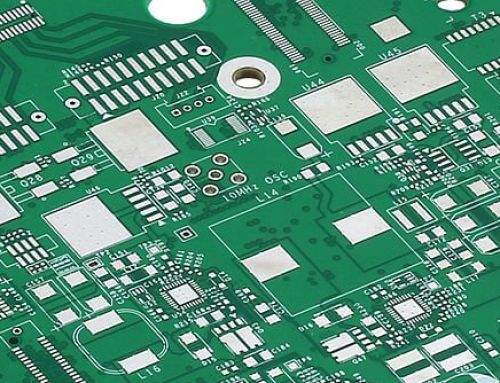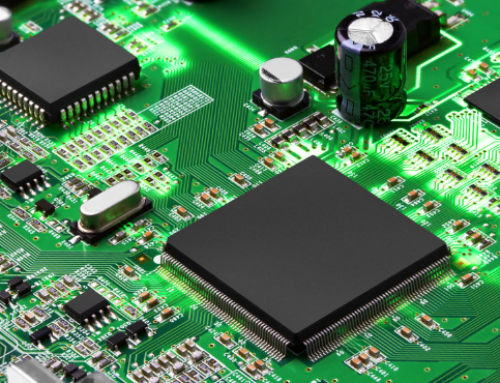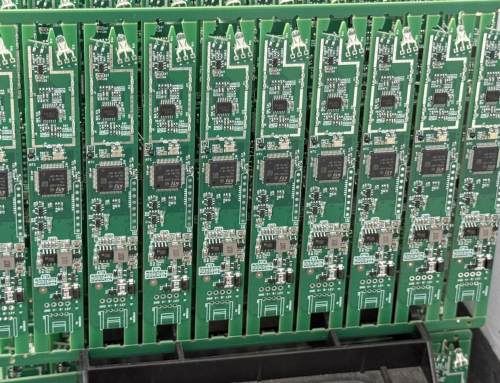A Complete Guide to Aluminum PCB
Aluminum PCB are built for heat. Learn what makes aluminum circuit boards essential for LEDs, power tech, and high-efficiency electronics.
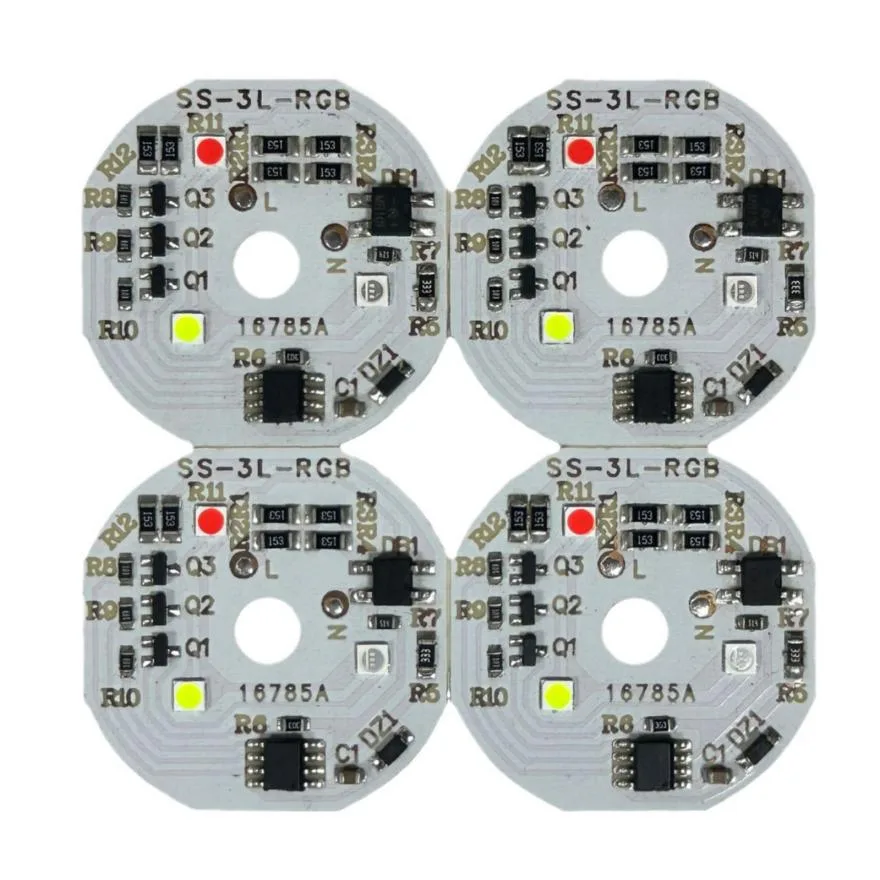
Aluminum PCBs don’t get much attention. They should. These boards are quietly powering LED lights, automotive electronics, power supply units, and so much more. Why? Because when things heat up, literally, aluminum circuit boards step in.
Heat is the enemy of performance. If you’ve ever held the back of an LED lamp or a phone charger and noticed it’s warm but still working perfectly, you’ve probably encountered an aluminum PCB board without realising it.
In this guide, I’m walking you through everything: what aluminum PCBs are, why they’re a smarter choice in high-heat environments, where they’re used, and how to avoid wasting money on low-grade options. Whether you’re sourcing for production or just exploring your options, you’ll want to understand how aluminum printed circuit boards have quietly become a go-to solution in modern electronics.
1. What Is an Aluminum PCB?
Let’s start with the basics. A printed circuit board, or PCB, is the backbone of electronic devices. Traditional boards are built on FR4, fiberglass reinforced epoxy laminate. It’s reliable, sure. But the moment heat becomes a concern, FR4 starts falling apart.
That’s where aluminum changes the game.
An aluminum PCB, sometimes called an aluminum backed PCB or aluminum core PCB, uses metal instead of fiberglass as the base. It still has copper tracks on top, those carry the electrical signals, but underneath, there’s a thermal layer that conducts heat, and below that, a solid sheet of aluminum that dissipates it efficiently.
Typical aluminum PCB structure:
- Copper layer– The circuit itself.
- Dielectric layer– An insulator that allows heat transfer.
- Aluminum base– The foundation for heat dissipation.
Because of this unique structure, aluminum circuit boards are especially common in devices where thermal management is critical, like high-powered LEDs or industrial power supplies.
And yes, in case you’re wondering, there’s no difference between “aluminum” and “aluminium PCB”, it’s just US vs. UK spelling.
2. Types of Aluminum PCBs
All aluminum printed circuit boards offer better heat performance than fiberglass ones, but they’re not all built the same. Depending on your project, you’ll need to choose a type that matches your layout, budget, and thermal load.
2.1 Single-layer aluminum PCB
This is the most widely used. It has one layer of copper mounted on an insulating layer and bonded to an aluminum base. You’ll find this version in everything from small LED modules to basic power supplies. It’s cost-effective and does the job well.
2.2 Double-layer aluminum PCB
As the name suggests, these boards feature two layers of copper. This allows for a more complex circuit layout while keeping the thermal advantages. Aluminum PCB boards like these are common in slightly more advanced lighting setups and automotive systems.
2.3 Multilayer aluminum PCB
Used in applications that demand high power and precision, think telecom equipment, industrial controls, and professional audio systems. These aluminum core PCBs consist of multiple layers sandwiched together, offering both compact design and excellent thermal performance.
2.4 Flexible aluminum backed PCB
This one’s rare but growing in use. Flexible sections are combined with an aluminum PCB base, giving you both bendability and heat dissipation. Perfect for custom enclosures and space-constrained projects.
Choosing the wrong type can cause overheating, performance drops, or even total failure. So it’s worth understanding which version of the aluminium circuit board suits your use case best.
3. Common Applications of Aluminum Circuit Boards
You might be surprised just how often aluminum PCBs show up in your everyday life. Anywhere electronics generate heat, these boards are working behind the scenes.
Let’s break down some real-world examples:
3.1 LED Lighting Systems
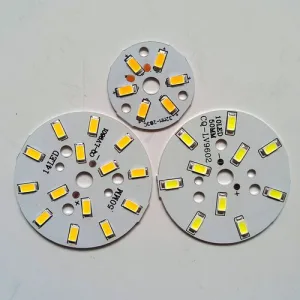
LED bulbs generate serious heat in a small space. That’s why most LED drivers are built on pcb aluminium LED boards. The aluminum base pulls heat away from sensitive components, improving brightness and extending lifespan.
3.2 Automotive Electronics
From headlight modules to power controllers and dashboard systems, aluminum circuit boards handle heat better than standard FR4. Cars are becoming more electronic by the year, so this matters.
3.3 Power Conversion Devices
Power supplies, transformers, voltage regulators, they all produce heat. Aluminum PCBs are ideal for these jobs because they keep temperatures down while maintaining strong electrical performance.
3.4 Audio Amplifiers
High-end audio gear often runs hot, especially analog amps. Using an aluminum PCB board keeps thermal noise low and prevents damage to heat-sensitive parts.
3.5 Telecom Equipment
Base stations, signal boosters, and network routers benefit from aluminum printed circuit boards due to their durability and heat efficiency, especially in continuous operation environments.
It’s not just hype. The heat-handling capabilities of an aluminum PCB make it essential in compact, high-performance, and long-lifespan electronics.
4. Why Use Aluminum Over Traditional Materials?
So why even bother with aluminum circuit boards in the first place? Isn’t fiberglass good enough?
Well, not always.
The main reason aluminum wins is simple: heat. Fiberglass boards trap heat. Aluminum boards spread it out and let it escape. That’s the difference between a product that runs cool and one that burns out after six months.
Let’s break it down.
4.1 Thermal conductivity
Aluminum conducts heat up to 10 times better than standard FR4. That’s not a small upgrade, it’s the reason why aluminum PCB boards are the go-to for high-power electronics like LEDs and power converters.
4.2 Longer lifespan
Electronics die early when they overheat. That’s a fact. Using an aluminum printed circuit board cuts down on thermal stress, meaning your components live longer and perform more consistently.
4.3 Durability
Aluminium circuit boards aren’t just thermally efficient, they’re also tougher. They handle vibrations better, resist warping, and survive rough handling during assembly and shipping.
4.4 Weight savings
Yes, aluminum is metal, but it’s lightweight compared to other metal-based PCB materials. That matters in applications like automotive or aerospace, where every gram counts.
4.5 Eco-friendliness
If you care about the environment (and you should), here’s a bonus: aluminum is recyclable. It’s easier on the planet than some composite materials used in traditional boards.
So no, aluminum isn’t a luxury, it’s often the smarter, more efficient choice. If your design involves heat, vibration, or power, a PCB aluminum LED or aluminum core PCB could be the difference between stable performance and constant headaches.
5. The Aluminum PCB Manufacturing Process
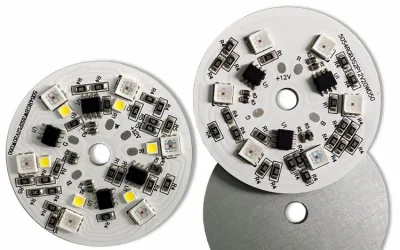
Now let’s talk about how these boards are made. This isn’t your standard off-the-shelf circuit board. Aluminum PCB manufacturing involves a few extra steps and a lot more precision.
Here’s what it typically looks like:
5.1 Material Preparation
It starts with three layers:
- Copper foil
- Thermal insulating layer (dielectric)
- Aluminum base plate
The copper is etched into your actual circuit layout, just like any other PCB. But the difference here is how heat moves from that layer through the dielectric and into the aluminum below.
And no, you can’t just slap them together. The thermal layer needs to be uniform, or the whole board becomes a weak point. That’s why aluminum PCB manufacturers use advanced lamination and bonding techniques, tiny air gaps ruin everything.
5.2 Circuit Imaging and Etching
This is where the magic happens. The copper layer is coated with a photosensitive material, exposed to UV light through a stencil, and then chemically etched to leave your circuit pattern.
It’s not unique to aluminum boards, but with higher heat requirements, the layout often needs to be tighter and more precise.
5.3 Drilling and Plating
Holes (vias) are drilled into the board to connect layers or mount components. But unlike fiberglass, the aluminum layer complicates this step. It requires specialized tools and extra care to avoid damaging the conductive pathways.
These vias are then plated, usually with copper, to maintain electrical flow.
5.4 Solder Mask and Surface Finish
A green (or black, or red) protective coating goes over the board to prevent oxidation and shorts. Then a surface finish is applied, usually HASL, ENIG, or OSP, to improve solderability.
By the way, if your manufacturer rushes this step, you’ll end up with weak joints and premature failures. And if you’ve sourced from a cheap aluminum PCB manufacturer before, you’ve probably seen this firsthand.
5.5 Testing and Inspection
Finally, every aluminum PCB board should be tested for continuity and insulation resistance. Some manufacturers also run thermal cycling tests to simulate long-term use.
Low-end suppliers often skip these steps. That’s why working with a high-quality aluminum PCB manufacturer matters more than you might think.
6. How to Choose the Right Aluminum PCB Manufacturer?
Not all manufacturers are built the same. And with aluminum PCBs, cutting corners on quality will cost you later, guaranteed.
So, how do you spot a good aluminum PCB manufacturer from the sea of cheap options online?
First, look at communication. If the factory replies to your design files with something like “OK,” that’s a red flag. A good supplier will actually check your specs, ask smart questions, and flag issues before they happen.
Next, check what kind of testing they offer. Visual inspections aren’t enough. You want to see thermal cycling reports, electrical testing results, and traceability on raw materials. No test results? Walk away.
And don’t forget past projects. Reliable manufacturers usually have case studies or real photos, not stock images, of previous builds. Some may even show thermal analysis simulations for their aluminum core PCBs. If they hesitate to show samples or can’t explain their process? Bad sign.
Last thing: look at location. Many of the best aluminum PCB boards come from factories in Shenzhen or Guangzhou. Why? They’ve refined the process, scaled their production, and often offer better tech support compared to smaller operations.
In short:
- Ask questions.
- Demand testing.
- Avoid silent suppliers.
- Always check for proper certifications.
This extra effort up front saves you from dealing with fried components, warped boards, or entire batches of unusable inventory.
7. Design Tips for Better Aluminum PCB Performance
Even the best aluminum printed circuit board will fail if your design is sloppy.
Want to get the most out of your board? Keep these simple tips in mind:
1) Keep heat zones isolated.
Group high-power components together, but don’t let them crowd each other. Give heat room to spread, and escape.
2) Use thermal vias wisely.
These are copper-filled holes that transfer heat from the top layer down to the aluminum base. They’re essential, but only when placed correctly. Scatter them under hot components, not at random.
3) Watch your copper thickness.
Thicker copper can handle more current, sure, but it also changes impedance and affects how much heat is conducted into the base. Always balance your electrical and thermal needs.
4) Component placement matters.
Put sensitive parts away from hotspots. Your microcontroller doesn’t want to sit next to a heat-sinking power transistor.
5) Skip the 90-degree corners.
Sharp angles in trace routing can cause heat stress and even interfere with signal integrity. Smooth curves aren’t just for looks, they reduce failure risk over time.
And if you’re not sure about your layout, ask your aluminum PCB manufacturer for DFM (Design for Manufacturing) feedback. A good one will catch small mistakes before they turn into big problems.
8. What Affects Aluminum PCB Pricing?
If you’ve ever asked for quotes and wondered why prices vary so much, here’s what actually drives the cost of an aluminum PCB:
- Layer count: Single-layer boards are cheap. Add more copper layers, and the price jumps. More complexity = more steps = more money.
- Thermal performance requirements: Special dielectric materials with higher thermal conductivity cost more. But if your board runs hot, they’re non-negotiable.
- Board thickness and copper weight: Thicker aluminum base plates and heavier copper add durability, but also drive up material and shipping costs.
- Custom shapes or slots: Straightforward rectangles are easy. Odd shapes or extra machining take more time, which means higher costs.
- Surface finish and testing: ENIG, OSP, or other high-end finishes are more expensive than basic HASL. Add-ons like flying probe testing or thermal cycling also increase the quote.
Oh, and ordering from an aluminum PCB manufacturer in bulk doesn’t always mean huge discounts. Small runs with tight specs can still be pricey if your design is complex.
Bottom line? Pay for quality where it matters. Skimping on thermal materials or skipping proper finishes just leads to more failures, and higher costs down the road.
9. Why So Many Aluminum PCBs Come From China?
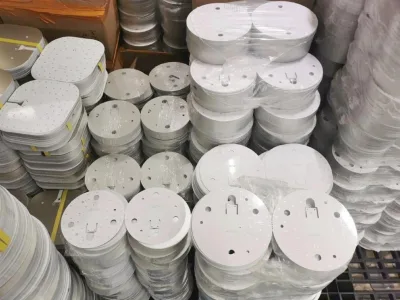
If you’ve ever tried sourcing aluminum PCBs, chances are your browser was flooded with suppliers from China, and that’s not a coincidence.
Chinese aluminum PCB manufacturers dominate the global market for a few reasons:
First off, scale. Factories in Shenzhen, Dongguan, and nearby regions produce these boards in bulk, fast. This kind of high-volume production keeps costs low without necessarily cutting corners (if you pick the right factory).
Then there’s specialization. Many of these manufacturers have spent over a decade fine-tuning their processes. From PCB aluminium LED designs to complex multilayer builds, they’ve developed custom equipment and automated lines designed specifically for aluminum PCB boards.
You also get flexibility. Need five prototype boards today and 5,000 next month? Most Chinese suppliers can handle both. Some even offer instant online quotes, material selection tools, and engineering support.
But, and this is a big but, not every factory plays fair. Some sacrifice quality for price. Others rush production and skip testing. That’s why choosing the right aluminum PCB manufacturer is just as important as choosing the right material.
If you’re working on a critical project, don’t settle for the cheapest quote. Look for customer reviews, third-party audits, and samples before committing. It’s worth it.
10. What’s Next for Aluminum PCBs?
The rise of high-power, space-saving electronics isn’t slowing down. And that means aluminum printed circuit boards aren’t going anywhere.
Here’s what to watch:
1) More LED integration.
As lighting tech gets smaller and brighter, aluminium LED PCBs are becoming standard in everything from street lamps to smart home lighting.
2) Electric vehicles and battery systems.
EVs run hot. Aluminum boards help manage that heat without adding too much weight, making them ideal for control units and charging modules.
3) Wearable and rugged tech.
Even in tight, mobile devices, aluminum backed PCBs can be custom-shaped and combined with thermal vias to offer better durability without overheating.
4) Automation and AI in production.
Expect more automated testing, real-time quality monitoring, and smart routing in Chinese factories. The goal? Faster turnaround, fewer defects.
5) Hybrid PCBs.
We’re seeing boards that combine aluminum cores with flex layers or even ceramic sections for advanced applications in aerospace and defense.
Long story short: if your device gets hot, gets knocked around, or has to run 24/7, aluminum isn’t just an option, it’s becoming the standard.
11. Aluminum PCB FAQs
12. Summary
They don’t get the spotlight, but aluminum printed circuit boards are behind the scenes keeping your electronics alive, and cool. From LEDs to automotive modules, power supplies to telecom systems, they do the dirty work fiberglass boards can’t handle.
Choosing the right type, working with a proper aluminum PCB manufacturer, and designing with thermal flow in mind will save you from headaches and hardware failures. Whether you’re building five units or five thousand, this isn’t the part to overlook.
In a world where everything’s running hotter and faster, aluminum isn’t just an upgrade, it’s a necessity.
related Posts
Contact us
WhatsApp: +86-18123905375
Wechat: +86-18123905375
Skype: ali_youte
Email: sales@highqualitypcb.com

